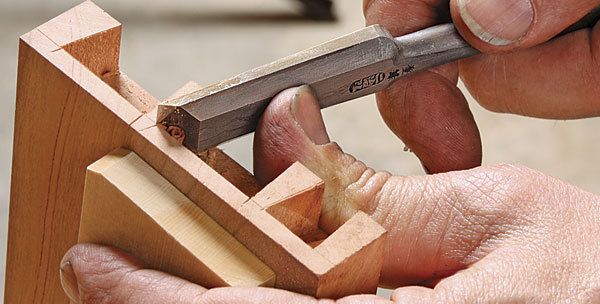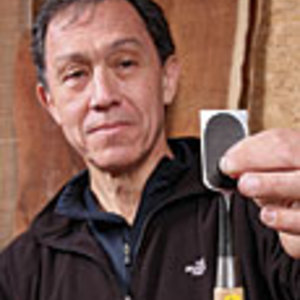Choosing and Using Japanese Chisels
Learn why Japanese bench chisels are superior edge tools.

Synopsis: There is a reason why Japanese hand tools have such a great reputation—solid craftsmanship. And when it comes to chisels, John Reed Fox says, Japanese varieties simply work better and for a longer period of time. The key is their laminated bodies. A thin layer of very hard, high-carbon steel that forms the cutting edge is welded to a thicker piece of iron or low-carbon steel that forms the body of the tool. The thick layer of softer metal provides mass and shock dampening and prevents the hard, brittle steel from fracturing. There are a few things you need to know when choosing and using these tools. Fox has been using them for more than 30 years, and if you follow his advice you can’t go wrong.
The machine area of my shop is stocked with Western woodworking machines. But over at my workbench, all the hand tools are Japanese. Just as it’s hard to beat hefty Western machines, I think Japanese hand tools clearly outperform their Western counterparts. When it comes to chisels, the Japanese variety takes a sharper, more durable edge than Western chisels; these tools simply work better and for a longer period of time.
What makes them so good?
Japanese chisels, like other Japanese edge tools, are laminated, and this is the key. A thin layer of very hard and finely tuned high-carbon steel—the cutting edge—is forge-welded to a thicker piece of iron or low-carbon steel that forms the body of the blade. The thick layer of softer metal provides mass and shock dampening and prevents the hard, brittle steel from fracturing.
When you buy a new Japanese chisel, there’s some setup to do before you can put it to work—flattening the back, creating the cutting bevel, and setting the hoop (for an explanation of that process, see p. 24). Here I’ll explain the anatomy of Japanese bench chisels, walk you through the various types, and give you guidelines and specific suggestions for which chisels to buy. Good-quality Japanese chisels are still made one at a time by individual blacksmiths in small shops, and I like the idea that while buying the best tool I can find I’m also helping keep an age-old craft alive.
Basic features
Nearly all Japanese style chisels share a common anatomy, give or take the hoop, which is not found on dedicated paring chisels. But there are interesting variations in the blades, some significant and some not.
Profiles
The Japanese bench chisel comes in a variety of blade profiles. These are four of the most common and useful.
Fine Woodworking Recommended Products

Suizan Japanese Pull Saw

Bahco 6-Inch Card Scraper

Stanley Powerlock 16-ft. tape measure








Log in or create an account to post a comment.
Sign up Log in